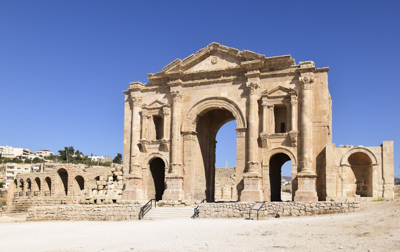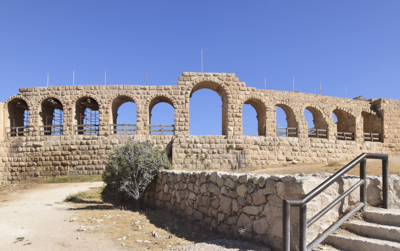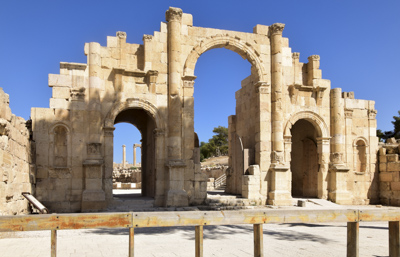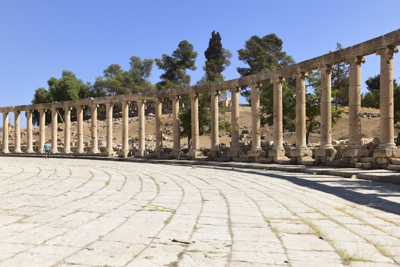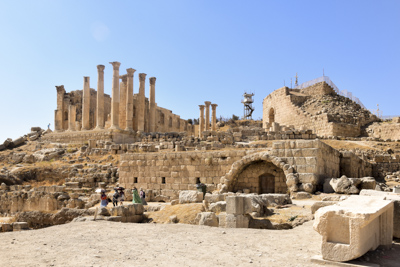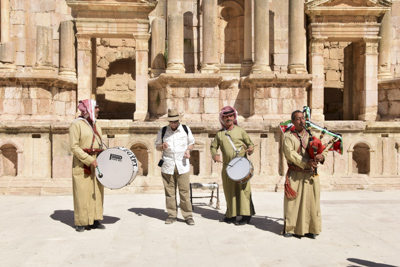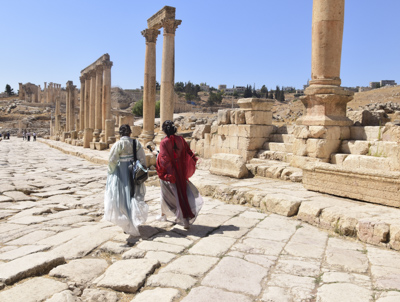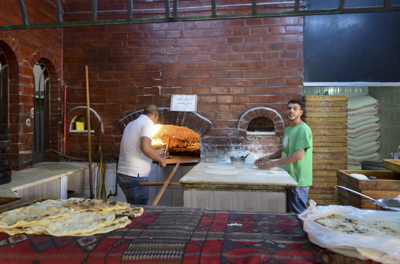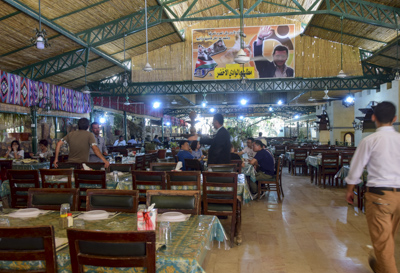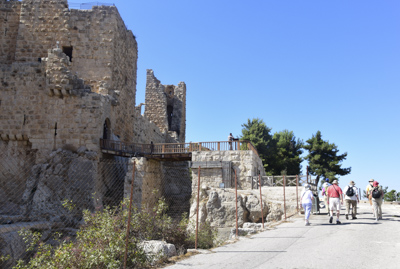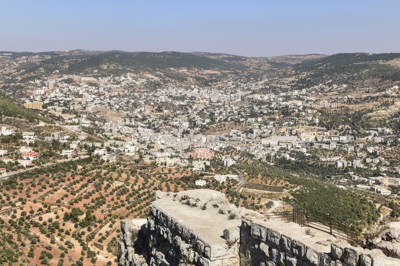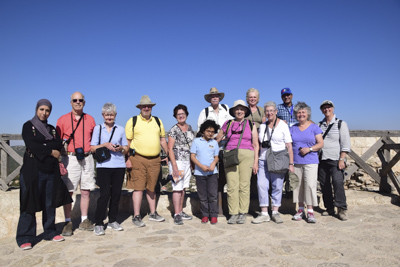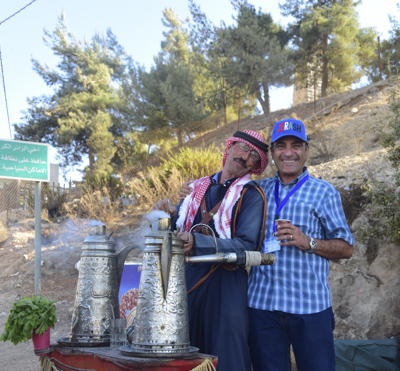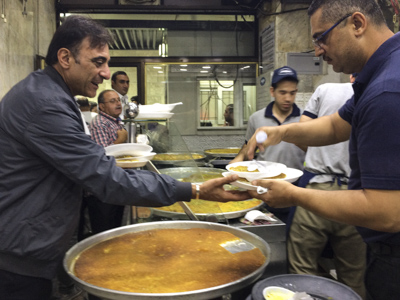Thursday September 28, 2017
A sunny cloudless 61 degrees Fahrenheit in the morning. We boarded our van and drove an hour and a half north of Amman to the city of Jerash, which is located near the Syrian border. During ancient times it was known as the city of Gerasa and was inhabited from the third millennium BC.
We entered through an arch which was built in 130 AD to honor the Emperor Hadrian who visited Gerasa.
North of the arch is the Hippodrome which is currently under restoration. A huge building was built during the 3rd century AD and was designed for horse racing and other sports events.
We entered the sprawling open-air museum through the south gate. Alexander the Great conquered the area in 334 BC and Gerasa became the site of a Macedonian Greek colony.
The ancient city was ravished by massive earthquakes and many wars which took place over the years. The ruins of Gerasa laid buried until 1806 when a German explorer, Jasper Seetzen, began a number of excavations. During this time, Jerash was inhabited by a small Muslim community. The Oval Plaza or Forum from the 1st century AD is enclosed by 160 Ionic columns:
Gerasa is considered to be the most significant and best preserved Greco-Roman city ever discovered. Excavations and preservation continue today because much of the ancient city still lies under the earth. Jerash has flourished during the last 100 years and is a popular tourist attraction. The Temple of Zeus in the photo below was built during the 1st to 2nd century AD.
At the Southern Theater which is an amphitheater which seats 3000 people, we were greeted by three musicians dressed in traditional Jordanian military costumes. They played Scottish tunes for us and led our group in a dance.
The Temple of Artemis was dedicated to honor the patron goddess of the city:
The Cardo, or main thoroughfare, connected the different sections of the city and led me back to the Arch of Hadrian.
We had a Jordanian lunch at the Green Valley Restaurant. It was a large and noisy restaurant filled with international tourists and friendly servers.
After lunch, we drove through fertile green hills lined with olive groves to the city of Ajlun to climb up to the top of the Ajloun Castle. This is a 12th century Muslim castle placed on a hilltop in the northwestern part of Jordan.
The fortress was constructed in 1185 AD in order to help the authorities in Damascus control the Bedouin tribes of the region.
The fortress dominated a wide stretch of the northern Jordan Valley and was one of the very few Muslim fortresses built to protect their realm against the Crusaders. Here is a view of the modern city of Ajlun from the top of the castle:
We spoke to a lovely young Jordanian couple who were visiting Ajloun Castle with their young son. Below is a group photo:
Mohammad ran into one of his cousins who was selling coffee-with-cardamom at the side of the road. We decided that Muhammad had thousands of cousins scattered all over Jordan. They posed for a photo:
Later, we went to dinner in the old section of Amman. We ate at a local family restaurant called Hasham which was tucked into an alleyway between two buildings. It was an experience!!
We waited in a long line with local people to buy knafeh (pronounced: ka-nah-feh) a sweet dessert made with stretchy cheese layered with flat cake and topped with pistachios.
There was a lively crowd of local people shopping, dining, and walking along the main street.
